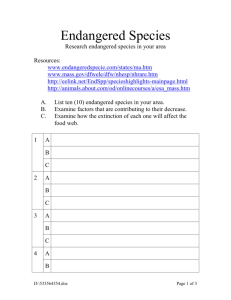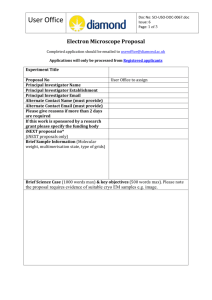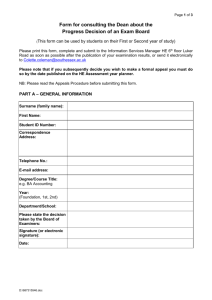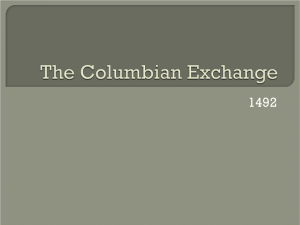Literature Paper Format - Dr. Allen D. Hunter
advertisement
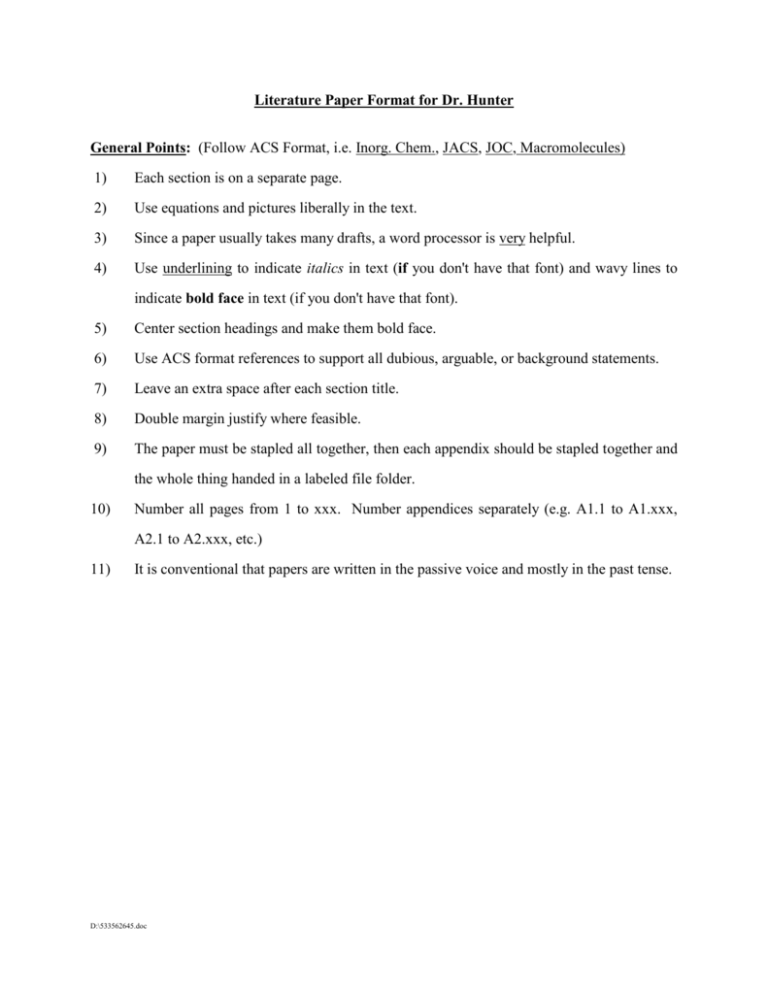
Literature Paper Format for Dr. Hunter General Points: (Follow ACS Format, i.e. Inorg. Chem., JACS, JOC, Macromolecules) 1) Each section is on a separate page. 2) Use equations and pictures liberally in the text. 3) Since a paper usually takes many drafts, a word processor is very helpful. 4) Use underlining to indicate italics in text (if you don't have that font) and wavy lines to indicate bold face in text (if you don't have that font). 5) Center section headings and make them bold face. 6) Use ACS format references to support all dubious, arguable, or background statements. 7) Leave an extra space after each section title. 8) Double margin justify where feasible. 9) The paper must be stapled all together, then each appendix should be stapled together and the whole thing handed in a labeled file folder. 10) Number all pages from 1 to xxx. Number appendices separately (e.g. A1.1 to A1.xxx, A2.1 to A2.xxx, etc.) 11) It is conventional that papers are written in the passive voice and mostly in the past tense. D:\533562645.doc 2 A Short Informative Title Goes Here, Each Word Capitalized and in Bold Face. Your Name Date Submitted for Publication to: Dr. A. Hunter, Department of Chemistry, Youngstown State University, Youngstown, OH 44555-3663. (Attn.: Chemistry 823, 1994) D:\533562645.doc 3 Abstract The abstract is a short-medium paragraph that provides an executive summary of the results of your work (generally <100 words). It should stand on its own (i.e. no references or referrals to the text). It summarizes what you tried to make, how they were made, any derivatives prepared/reaction carried out on them, and how they were characterized. Remember, most readers only read the abstract and look at equations and pictures. D:\533562645.doc 4 Introduction The introduction sets up the "story" that you are trying to sell. It provides background material and tries to convince the reader (referee) of the works importance. It typically is several typed pages of text (plus much more due to pictures and equations) in length. For example, a paper about some PR3 chemistry might have the following sections, each one up to several paragraphs long: In general, what are PR3's used for? In general, how have PR3's been prepared and what range of R groups have been used? In general, what are the properties of PR3's? In general, what are some common reactions/derivatives of PR3 (some of these will be relevant to reactions you did)? What is the literature background of your specific PR3? What have people said or done on it before? What were you trying to do in this research you are now reporting? What compounds will you report and how will they be characterized? D:\533562645.doc 5 Experimental Section The first paragraph(s) here set up your general conditions that would allow another lab to repeat your work. List where each of your reagents were purchased from, what grade they were, and how they were purified. How were your solvents purified? Did you follow the general procedures of any books (e.g. references to any general lab text, Perrin/Perrin/Amarego, etc.)? Generally, what was done in air, under "dry air" (i.e. anhydrous conditions), under N2, etc.? Give general references. [Give experimental details of how each characterization technique was carried out in a separate section.] Warning: Give a warning here of any unusual hazards your procedures entailed (taken either from your literature searches or your experience. Reference MSDS, etc. in appendices. In a separate paragraph, tell general procedures for how materials were characterized, including: instrumental model numbers, conditions, etc. Reference characterization data in tables/appendices. In the next sections (each of 1 paragraph length) detail how each of your syntheses was carried out in sufficient detail to be repeated by others. This is not a word for word copy of your lab book, but a report written with hindsight of what you did to get the product. If you did a synthesis several times at different scales or using related methods, etc., choose one and describe it in detail in one paragraph. Then, in a separate paragraph describe only significant differences of the other runs. Synthesis of xxx, or Reaction of xxx With yyy, or Attempted Synthesis of xxx (each report starts with a very short descriptive title). Text starts immediately afterward. One paragraph describes reaction and purification. One paragraph describes differences for related syntheses you have carried out for the same product. D:\533562645.doc 6 One paragraph gives characterization data (in ACS format), or refers the reader to the Table(s) that summarize this data, and refers reader to spectra, etc. in the appendix. D:\533562645.doc 7 Results and Discussion First part generally outlines the syntheses done in words and equations (but not in minor experimental detail and not giving normal workup procedures). Typically, one paragraph per product or reaction type. Your syntheses are related to those previously reported in the literature here with emphasis on any differences. Comment on purification methods here, especially on what seems to work best (i.e. what solvents for crystallization, etc.). The next sections are typically on materials characterization, typically one paragraph per compound. How pure were your products and how was purity ascertained? How did you identify your products? How did you establish their structures? How do your data agree with literature values. [Analysis by at least mp, IR, NMR, TLC and HPLC/GPC/GC/MS/EA, etc. if available.] In the next sections discuss the structures and bonding of all your compounds in Lewis, VSEPR, valence bond, molecular orbital, etc. terms. Discuss their properties such as Lewis Acidity/Basicity, Steric effects, Solubilities, Instabilities, etc. here. Comment on any trends. Relate your results to those of others in the lab. syntheses, etc., differ and why. D:\533562645.doc Thus, how do your compounds, 8 Conclusion In this section (generally less than one typed page) you are expected to give insight into your work, suggestions for improved methods for doing it in the future, and suggestions for extension of these studies. D:\533562645.doc 9 References and Notes (1) These are numbered sequentially and must follow ACS format. (2) Closely related papers can be grouped together as (a), (b), (c), etc. (3) If you didn't get your hands on a paper, don't reference it. Thus, if you used the Chemical Abstract only, reference it. For my needs, place the original paper you didn't get in brackets after the Chem. Abstract. (4) You must hand in copies of all papers, abstracts, etc. you use as Appendix 1. (5) You can also place notes here, (i.e. short comments etc.) that don't quite fit in the text. (6) The reference section should be comprehensive of the literature. D:\533562645.doc 10 List of Figures Figure 1: Short descriptive titles of each should be given. Figure 2: A picture is worth a thousand words. Figure 3: A picture can be used to summarize: all products prepared, Lewis Dot structures, numbering schemes for NMR, representative chromatograms, etc. D:\533562645.doc 11 PICTURE PICTURE Figure 1: The title of the figure also goes at the bottom of the picture. It should be selfexplanatory. Each figure on a separate page. D:\533562645.doc 12 List of Schemes Scheme 1: Use a scheme to summarize the "flow" of a series of related reactions. Scheme 2: Each scheme should follow on a separate page with the title on the page bottom. D:\533562645.doc 13 List of Tables Table I. Tables are used to compactly summarize raw data or calculated results. Table II. Each table follows on a subsequent page with the title on the top of the page. D:\533562645.doc 14 A1.1 Appendix 1 - References List the contents of this Appendix giving page numbers of each item (i.e. A1.1., A1.2, A1.3, etc.) that follows. D:\533562645.doc 15 A2.1 Appendix 2 - Safety Data List the contents of this appendix giving page numbers of each item (i.e. A2.1, A2.2, A2.3, etc.) that follows. D:\533562645.doc 16 A3.1 Appendix 3.1 - Raw Spectral Data List the contents of this appendix giving page numbers of each item (i.e. A3.1, A3.2, A3.3 etc.) that follows. D:\533562645.doc

